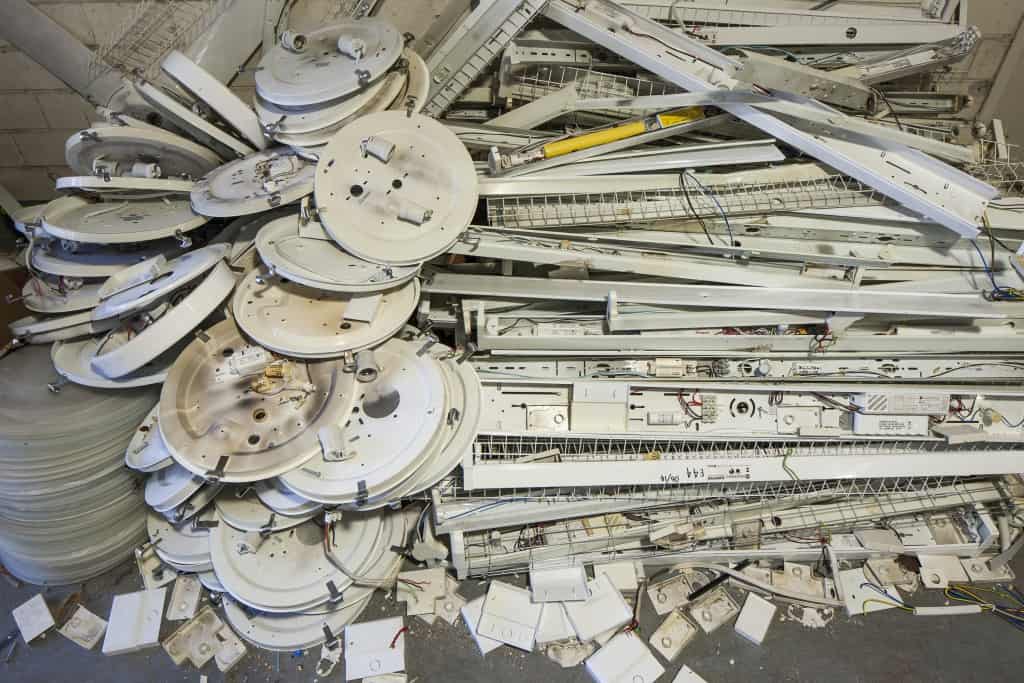Seven hidden costs of emergency lighting
 Many emergency lighting operating costs are overlooked. Here, enLighten outlines the top seven.
Many emergency lighting operating costs are overlooked. Here, enLighten outlines the top seven.
When it comes to emergency lighting systems, the upfront luminaire cost is only one consideration.
ADVERTISEMENT
The ongoing cost of maintenance and testing should also be taken into account.
Here’s a summary of emergency lighting operating cost areas that are sometimes overlooked.
- Whole fitting replacement at point of battery failure
When a light fails the six-monthly test, industry practice has been to replace the whole emergency batten fitting.
It is believed this is cheaper than undertaking further investigations that would result in isolating a circuit to replace the faulty component – typically the battery.
This often leads to emergency light fittings being replaced every three or four years.
Solution: Choose an emergency light with features such as easy removal for repairs and upgrading, and/or an accessible drawer for the battery so it can be replaced without isolating the mains power.
- Co-ordination of emergency light testing
To prepare for the six-monthly emergency test, building managers and owners need to advise all occupants of disruption in areas where systems are being tested. This typically involves isolating mains power to the lighting circuit.
Stakeholders must be co-ordinated, including external contractors who typically conduct the test after hours, as well as security staff to supervise contractors in tenanted areas after hours.
Solution: Monitored emergency lighting systems allow the mandated six-monthly battery discharge tests without disrupting power, but this comes at a system cost premium of 30-40%.
Similar self-test functionality is available in stand-alone luminaires, which conduct battery discharge while maintaining normal operation. This obviates the cost of notifying occupants, and co-ordinating contractors and other service providers.
The test status is visible via an LED indicator.
- Fixing faults in lighting circuits
When a circuit trips or fails due to thermal overload, short circuit or moisture ingress, fault-finding by a qualified electrician can be complicated, time consuming and costly.
Often it involves removing light fittings and examining wiring up and down the line.
Solution – Emergency lights with a SmartConnect base allows the light fitting to be replaced, and fault-finding is done off-line.
- Pressure to certify buildings can result in higher than normal luminaire replacement costs
Building managers and owners are required to submit emergency lighting certification to local authorities in a timely manner.
This results in pressure for six-monthly test reports and any subsequent repairs –often requiring a premium to paid.
Solution: If the luminaire design allows for simple battery changeover, you can stock spare battery packs for the testing contractor, thereby reducing the pressure during this critical period.
- Cleaning lights
Cleaning is crucial for lighting efficiency. Light levels can decrease over time because of dirt on luminaires and a build up of insects inside the light.
Total illumination can be cut by 30% or more, potentially falling below the required lighting levels.
Australian Standard AS 2293.3 requires that all emergency lights have their light-emitting surfaces cleaned annually.
Solution – Beyond a simple wipe down, a light fitting that is easily removed for further cleaning will reduce ongoing cleaning and maintenance costs.
Many light fixtures require holes to be drilled for cable entry points, and these often allow insects to enter. Lights that connect to a separate base do not have this problem and therefore will not need to be opened and cleaned.
- Drop in light output (lumen depreciation) over time
Emergency lighting systems in which output in non-emergency mode is part of the area lighting must meet the relevant area lighting requirements.
Many emergency light fixtures have older fluorescent lamps needing constant replacement, or poor-quality LEDs that cause output to depreciate quickly.
Upgrades can result in ‘energy efficient’ lights being selected that are underpowered, resulting in output that doesn’t comply with the local building code.
This means reduced amenity for occupants and a liability for the building owner. Tenants may quit, and insurance companies may not cover claims after an accident in non-compliant areas – both of which are very expensive.
Solution: Know the light-level requirements for your building, or ask your electrical contractor or lighting supplier.
You will need to demonstrate compliance to claim government rebates.
Look for a luminaire with a broad range of light outputs to give you flexibility for various areas.
Check the quality of the LEDs. Luminaire datasheets will list LED chip sources if a reputable brand is used.
Look for emergency luminaires that are ‘approved for use’ by state government energy efficiency scheme administrators, as LM80 test reports must be supplied to support LED performance.
- Keeping monitored emergency lighting systems up to date
Commissioning of monitored emergency lighting systems is complex.
It requires specialist contractors to wire and program all light connection points into the system.
When any system changes are needed, there is no simple addition or subtraction of lights. The high call-out rates charged for programming or wiring changes by contractors working with proprietary systems are the source of complaints from building managers.
Additions or changes to emergency lights in tenanted commercial offices are often not incorporated into the base building’s monitored emergency lighting system.
This reduces the accuracy of emergency light testing, and building managers cannot placer their complete trust in system reports.
Solution: Keep it simple. Unmonitored stand-alone emergency luminaires can display the test status via a multi-coloured LED indicator.
Given that a visual inspection of each emergency light is required under Australian Standard 2293:3, the checks can be undertaken at the same time to determine compliance status, eliminating the need for an expensive monitored system.
-
ADVERTISEMENT
-
ADVERTISEMENT

